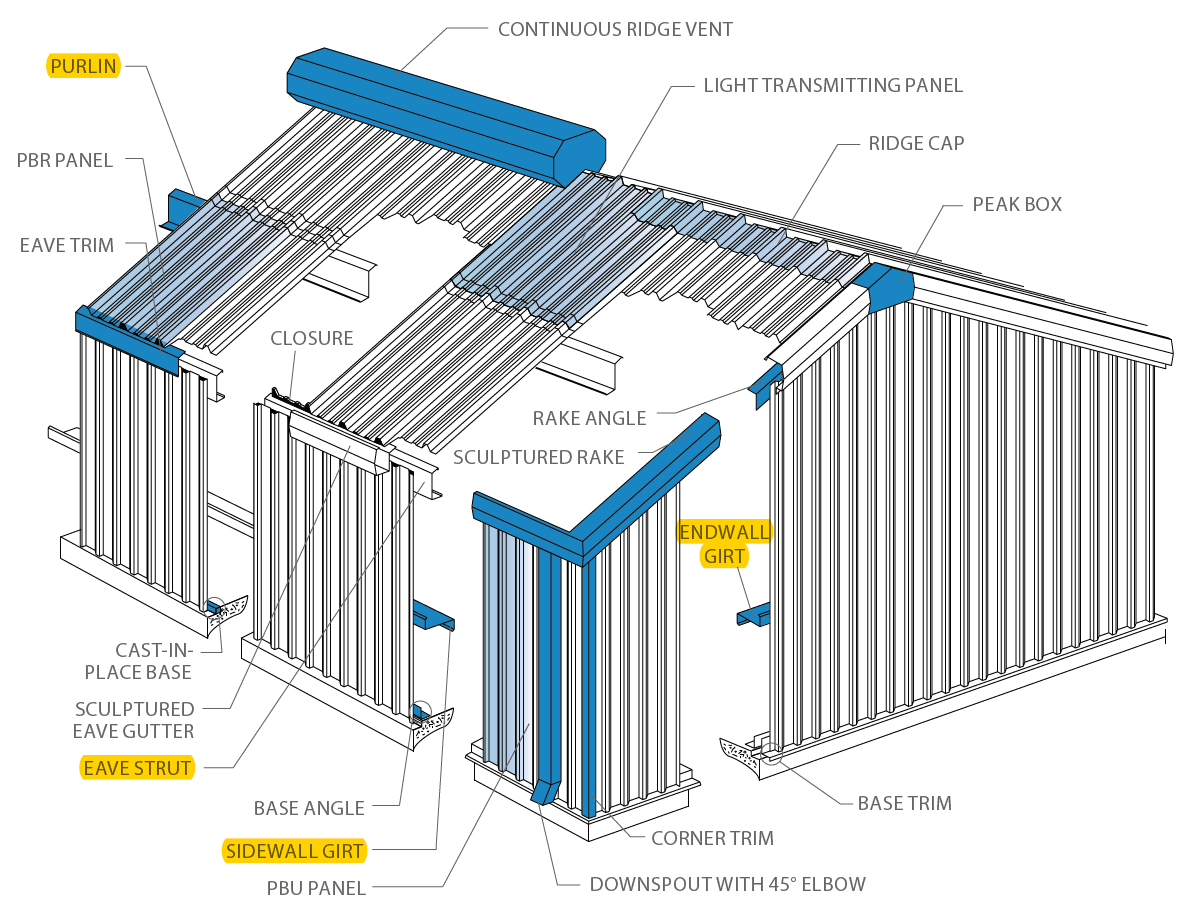Metal building terminology can be confusing if you are not accustomed to the language day in and day out. Truth be, you may just want to know what your contractor is talking about when he is installing your metal building. Let’s talk about the differences with purlins, girts and eave struts so you can help make better sense of what is what on your metal building.

Purlins vs Girts
Purlins are specific to the roof. In the shape of a “Z”, a purlin is a horizontal structural member that supports roof covering and carries loads to the primary frame. They are one directional and bolt downhill of the clip.
Opposite of purlins and roofs, girts are used on walls. Also, in the shape of a “Z”, a girt is a horizontal structural member that is attached to sidewall or end wall columns and supports paneling. They can be bolted to the top or bottom of a clip.
What do purlins and girts have in common? Both purlins and girts have uneven legs for lapping and, as mentioned, a “Z” design that is used for bolting to clips on your rafters and laps. Arrows are conveniently stamped on both the purlins and girts and point to the larger leg or flange for easier installation.
What are Eave Struts?
Another structural member of your building similar to girts and purlins are eave struts. Eave refers to the line along the sidewall formed by the intersection of the planes of the roof and the wall. Therefore, eave struts are located at the eave of a building that supports roof and wall paneling and are in the shape of a “C”.
When it comes to a metal building, there many terms and components that can be confused in simple conversation. However, with quick informational pieces at the tips of your fingers, you will be speaking the metal building language in no time.
For more information on metal buildings, contact your local Fortify representative.





Share